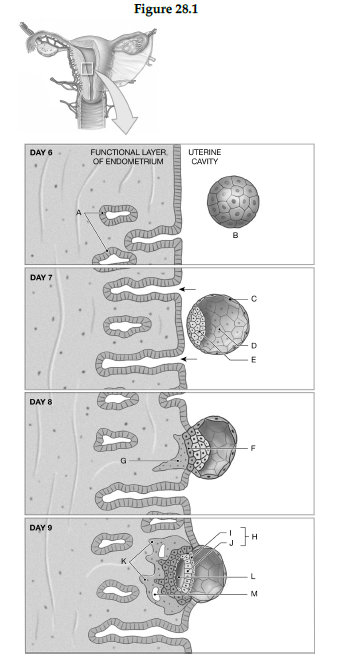Using the figure below, identify the labeled part.

1) Label A: ______________________________
2) Label B: ______________________________
3) Label C: ______________________________
4) Label D: ______________________________
5) Label E: ______________________________
6) Label F: ______________________________
7) Label G: ______________________________
8) Label H: ______________________________
9) Label I: ______________________________
10) Label J: ______________________________
11) Label K: ______________________________
12) Label L: ______________________________
13) Label M: ______________________________
1) Uterine glands
2) Blastocyst
3) Trophoblast
4) Blastocoele
5) Inner cell mass
6) Cellular trophoblast
7) Syncytial trophoblast
8) Blastodisc
9) Hypoblast
10) Epiblast
11) Developing primary villi
12) Amniotic cavity
13) Lacuna
You might also like to view...
When cells are arranged in a scalelike or flat arrangement, they are referred to as ________.
A. squamous B. cuboidal C. columnar D. transitional
The ribs are _____ to the sternum
a) lateral b) medial c) proximal d) distal e) superior
Select the correct statement regarding epithelia
A) Simple epithelia form impermeable barriers. B) Pseudostratified epithelia consist of at least two layers of cells stacked on top of one another. C) Stratified epithelia are tall, narrow cells. D) Stratified epithelia are present where protection from abrasion is important.
The development of hypoxia can limit the effectiveness of respiratory compensation for metabolic
A. acidosis. B. alkalosis.